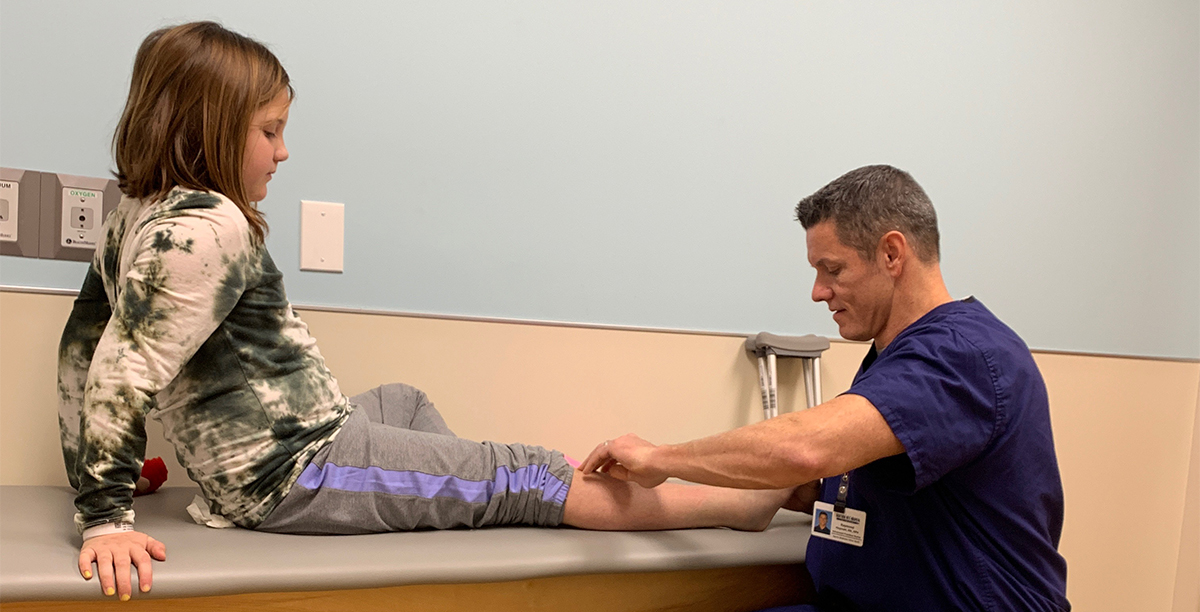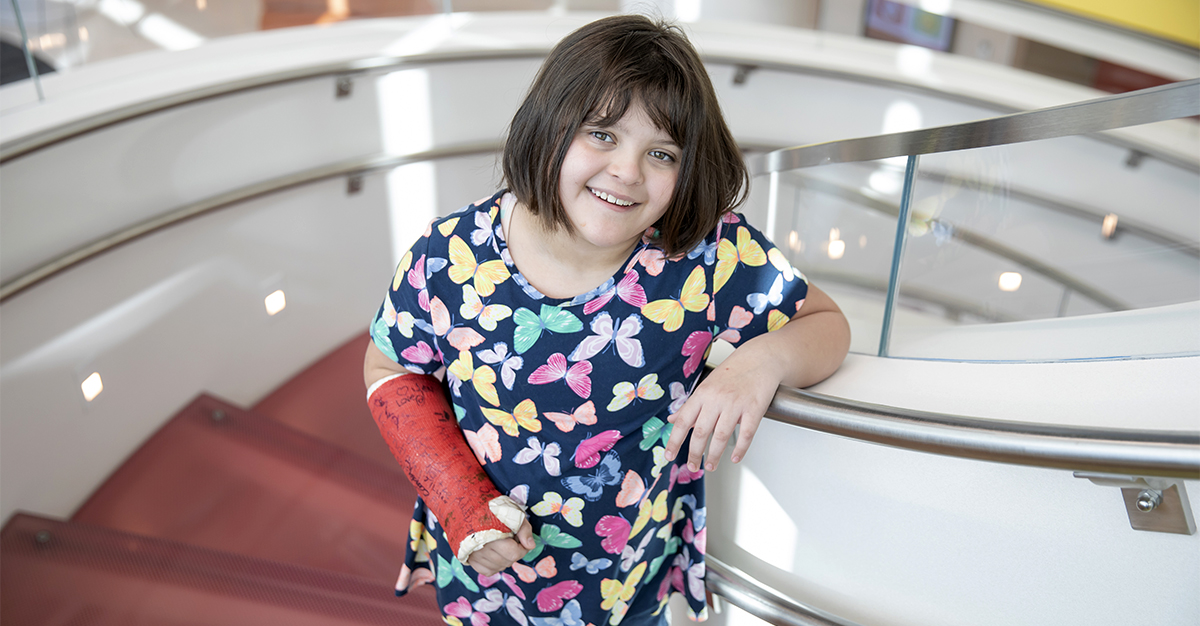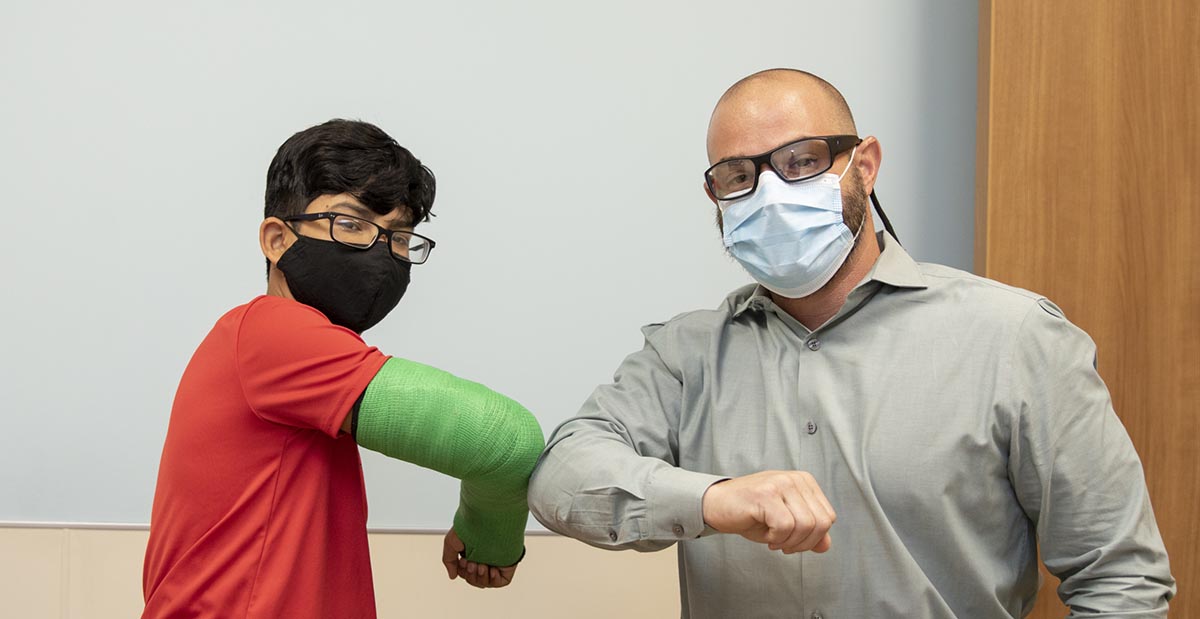
Aug 24, 2021 / Fractures
“Walk It Off, It’s Just an Ankle Sprain.”…. Or Is It? – Fracture Clinic Tips
The ankle is one of the most commonly injured body parts in children of all ages. An ankle sprain usually occurs when the ligaments, which support the three ankle bones, are stretched beyond their normal limits. This often occurs when the ankle is twisted or rolled inwards. When this happens, the ligaments can stretch or even tear, and oftentimes a “pop” is reported to be heard or felt at the time of the injury. When a child or adolescent with open growth plates twists or rolls their ankle, it can actually result in a fracture of the growth plate rather than a sprain to the ligament.
Ray Kleposki M.S.N., CPNP, a Scottish Rite for Children Fracture Clinic Nurse Practitioner, tells us, “An evaluation by a pediatric orthopedic specialist can help to prevent potential complications. Usually X-rays are required to make a diagnosis and treatment will depend on multiple factors, including the specific type of injury and age of the patient.”
An ankle sprain is an injury to one or more of the ligaments which support the ankle joint. Ligaments connect bones and hold a joint together. Ankle sprains are one of the most common sports injuries but can happen anywhere.
How does it occur?
Any movement that causes the ligaments of the ankle to stretch farther than they naturally can, may cause an ankle sprain. Examples include:
- Twisting or turning injury during a step or landing.
- Fall or near fall on an uneven surface.
- Unsteadiness from a sudden change in direction.
- Tenderness or pain
- Limp or pain with walking
- Aching
- Swelling
- Bruising or discoloration
An ankle sprain is best diagnosed by a health care provider. A detailed history and physical exam will be performed. In some cases, X-rays or other imaging may be ordered to evaluate for injuries to the bones or other tissues.
How long will this injury last?
Recovery time varies and depends on the child and the severity of the injury. A child may recover in a few days, weeks or months. Rehabilitation to strengthen and stabilize the ankle, and to reduce the risk of another injury, plays an important role during the recovery from an ankle sprain.
How is it treated?
To improve pain and swelling:
- Limit activity since pain may increase with activity.
- PRICE: Protect, Rest, Ice, Compression and Elevation.
- Non-steroidal anti-inflammatory medications (NSAIDs) such as ibuprofen (Advil®, Motrin®) or naproxen sodium (Aleve®) may be taken as needed for pain.
- Motion and flexibility
- Strength
- Balance, proprioception and stability
This decision is made based on the severity of the injury, the child’s age and activity level. A gradual functional return to activity and sports can be made once:
- cleared by provider.
- pain and swelling are gone.
- able to walk without pain or limp.
- ankle has full motion, and strength is the same as on the other ankle.
- balance is restored.
Restoring and maintaining ankle strength and mobility are both vital in preventing repeat ankle injuries.
Here are several additional ways to protect the ankle:
- Wear proper fitting shoes, tied correctly, for activities.
- Learn and perform strength and neuromuscular exercises a few times a week.
- Stretch before and after activity.
- Focus on form and proper technique.
- Work with a knowledgeable coach familiar with proper training for growing athletes.
- Consider an ankle brace or ankle taping to provide support.
The Fracture Clinic in Frisco is open Monday – Friday from 7:30 a.m. to 4:30 p.m. The clinic accepts walk-in patients between 7:30 a.m. and 9:30 a.m.
Learn more about our Fracture Clinic.



